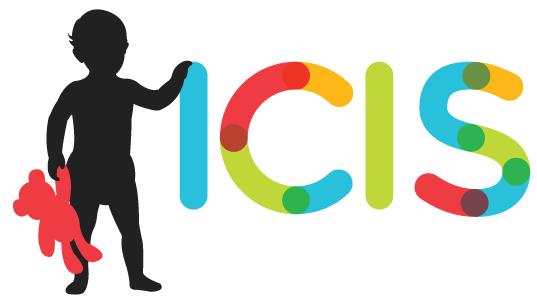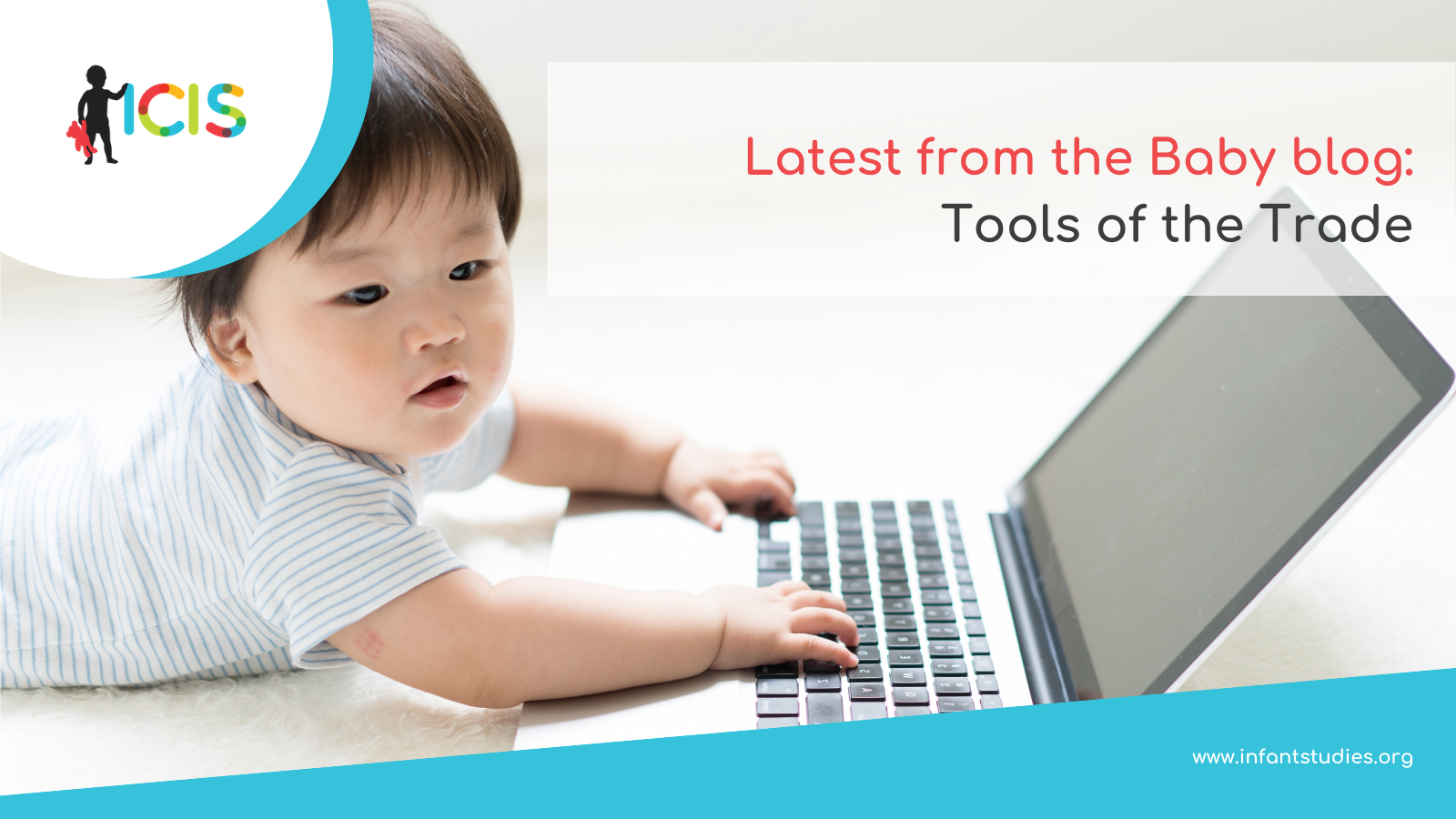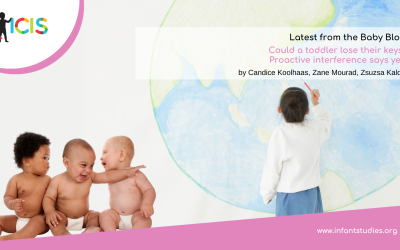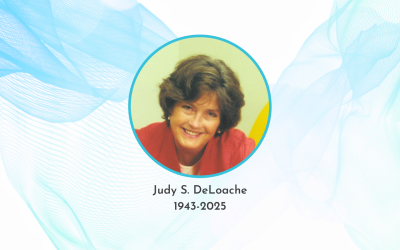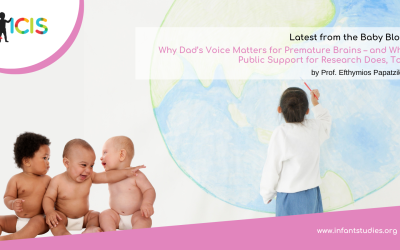by Joshua L. Schneider and Kelsey L. West
The theoretical framework of developmental cascades has taken a firm foothold among infancy researchers. Indeed, it was the theme of this year’s ICIS meeting with not one, but two presidential addresses (Lisa Oakes and Catherine Tamis-LeMonda) opening with mountain stream metaphors to describe cascades. The mountain stream metaphor offers a simple but powerful idea about how distinct domains build upon one another. The rocks, dirt, and foliage that comprise the mountain landscape guide the water as it flows downstream. Simultaneously, the movement of the water carves out and shapes the landscape (which naturally, feeds back into the movement itself). And, droplets of water can travel very different routes down the mountain but often arrive at similar destinations; one droplet may move gently along the edges of the stream while another travels down its rough turbulent middle.
As trainees, we have “grown up” in research labs that apply a cascades framework: as graduate students and post-docs working with Jana Iverson at the University of Pittsburgh and Karen Adolph and Cathie Tamis-LeMonda at New York University. Needless to say, we spend a lot of time thinking about how developmental events cast wide ripples (to keep with our water-related metaphors) and affect seemingly separate events. The cascades approach has become engrained into the way we do our science, mentor and teach our students, and even how we think about the connections between our professional and personal lives.
Cascades in research. Initiation into a cascades-focused lab was exciting, but also a bit daunting. Surely to study multiple domains of development, one needs expertise in multiple domains (and as new grad students, we didn’t have expertise in any domain yet)! During weekly meetings, Jana Iverson reminded us what Esther Thelen always told her—“Everything matters!” Studying everything all at once seemed insurmountable (and indeed, no single study can address every factor shaping infant learning). But our trepidation subsided as we discovered how a cascades perspective could capture the complex inter-relations among the behaviors we observed in infants and their caregivers. Specifically, we have documented how new motor skills, like learning to sit, crawl, cruise, or walk, prompt changes in language development (West & Iverson, 2017; West et al., 2019), social interactions (West & Iverson, 2021; West et al., 2022), input from caregivers (Schneider & Iverson, 2022; West et al., under review), and even the physical contexts of play (e.g., how infants and caregivers position their bodies relative to one another during play time; Chen et al., under review; Schneider et al., in prep; Schneider et al., 2022). In addition, the cascades framework allowed us to examine the biological and contextual factors that set two infants on very different paths to similar development endpoints (like the water droplet racing down the mountainside or an infant learning to walk; Schneider & Iverson, under review). To this end, we documented cascades in infants with neurotypical and neurodivergent developmental pathways; particularly in infants who later develop autism (Calabretta et al., in revision; West et al., under review). In the course of each study, we’ve discovered something new by looking beyond our own research silos. By the way, it turns out that you don’t need to be an expert in many domains, you just have to know an expert—our mentors and collaborators filled in the gaps in our knowledge.
Cascades in mentoring. We have been lucky to mentor an incredibly talented group of undergraduates in our labs. Through a cascades perspective, we’ve come to appreciate how the skills students develop in the lab build on themselves over time and ripple into other aspects of their lives. Take for example the “2-minute spiel”, an exercise we picked up from Karen Adolph. Students read a research article and then, sometimes with slight groans and nervous faces, deliver an elevator pitch summarizing the paper in a way that anyone could understand—they highlight only the essential information and leave out the minutia. With practice, students hone soft skills that extend beyond the lab. They learn to digest primary-source research articles, which strengthens their ability to evaluate claims they encounter in life (an especially useful skill in an era of “alternative facts”). Students also begin to see the forest, not just the trees, of individual studies. As a result, their own writing becomes more streamlined and focused-in on a broader argument. Finally, students learn to communicate about science in an accessible way, a skill that greatly benefits them during high-stakes interviews. And because students can clearly articulate their science to many people—not just experts in their niche—they elicit feedback from a broad audience with diverse expertise, adding breadth and maturity to their ideas (no cascade hypothesis is complete without a feedback loop, right?)
Cascades in everyday life. The idea that seemingly separate domains can interrelate also shows up in our attitudes about work-life balance. Sometimes in academia, young scientists can feel pressure to suffer for their art: to work long hours on little sleep, give up their weekends and evenings, and spend little time resting, socializing, or pursing hobbies. But like the water and the mountain landscape, personal and professional domains are reciprocally influential. Investing in non-research activities (like art, music, reading fiction, or hiking) has downstream benefits for our science. For instance, our shared backgrounds in art and design influence the way we visualize and present our data such that it is well-composed and clear. And in our writing, as in our artwork, we’ve learned to put the rough broad strokes down on paper first, and then fill in with the fine lines and detail later. In addition, we’ve both learned the hard way that sacrificing sleep just isn’t worth the consequences (some cascades deliver consequences). And finally, socializing is perhaps the most essential non-academic investment of our time. Cultivating a strong social support system (filled with good people, good food, and of course, cake and champagne) was a life-saver in our doctoral and post-doctoral journeys, and surely kept us going when the going got tough.
Seeing the world through “cascades-colored glasses” has shaped our outlook in many ways. We consider developmental cascades when we do our science, apply its principles when we mentor our students, and attempt to take its heed as we learn to balance work and life. And finally, as we all learned while traveling to and from the ICIS 2022 meeting in Ottawa, even planes can developmentally cascade—from delay to delay, that is.
References
- West, K. L., & Iverson, J. M. (2017). Language learning is hands-on: Exploring links between infants’ object manipulation and verbal input. Cognitive Development, 43, 190–200. https://doi.org/10.1016/j.cogdev.2017.05.004
- West, K. L., Leezenbaum, N. B., Northrup, J. B., & Iverson, J. M. (2019). The relation between walking and language in infant siblings of children with autism spectrum disorder. Child Development, 90(3), e356–e372. https://doi.org/10.1111/cdev.12980
- West, K. L., & Iverson, J. M. (2021). Communication changes when infants begin to walk. Developmental Science, 24(5), e13102. https://doi.org/10.1111/desc.13102
- West, K. L., Fletcher, K. K., Adolph, K. E., & Tamis-LeMonda, C. S. (2022). Mothers talk about infants’ actions: How verbs correspond to infants’ real-time behavior. Developmental Psychology, 58(3), 405–416. https://doi.org/10.1037/dev0001285
- Schneider, J. L., & Iverson, J. M. (2022). Cascades in action: How the transition to walking shapes caregiver communication during everyday interactions. Developmental Psychology, 58(1), 1–16. https://doi.org/10.1037/dev0001280
- West, K. L., Saleh, A. N., Adolph, K. E., & Tamis-LeMonda, C. S. (under review). “Go, go, go!” Mothers’ verbs align with infants’ locomotion. Developmental Science.
- Chen, Q., Schneider, J. L., West., K. L., & Iverson, J. M. (under review). Locomotion shapes infant-adult proximity during everyday play. Infancy.
- Schneider, J. L., Marty, O. C., & Iverson, J. M. (in prep). Everyday environments for infant locomotion: Cataloging the natural affordances for infant cruising.
- Schneider, J. L., Roemer, E. J., Northrup, J. B., & Iverson, J. M. (2022). Dynamics of the dyad: How mothers and infants co-construct interaction spaces during object play. Developmental Science, 00, e13281. https://doi.org/10.1111/desc.13281
- Schneider, J. L. & Iverson, J. M. (under review). Equifinality in infancy: The many paths to walking. Developmental Psychobiology.
- Calabretta, B. T., Schneider, J. L., & Iverson, J. M. (in revision). Bidding on the go: Links between walking, social actions, and caregiver responses in infant siblings of children with autism spectrum disorder. Autism Research.
- West, K. L., Steward, S. E., Roemer, E. J., & Iverson, J. M. (under review). Walking boosts communication for neurotypical infants, but not infants later diagnosed with ASD. Journal of Autism and Developmental Disorders.
About the Authors

Joshua L. Schneider
University of Pittsburgh
Joshua Schneider is a doctoral student at the University of Pittsburgh. He received his B.A. from New York University and M.S. from the University of Pittsburgh. His research focuses on the study of developmental cascades in context by examining the bidirectional pathways that link advances in infant motor development to alterations in caregiver communication and aspects of the physical environment within which everyday interactions take place.

Kelsey L. West
University of Alabama
Dr. Kelsey West is an Assistant Professor at the University of Alabama. She received her B.A. from Indiana University and her Ph.D. from the University of Pittsburgh. Her research program looks at the relation between motor and language development as a model system for understanding developmental cascades. Specifically, Dr. West investigates how motor achievements—like learning to walk—can open and/or constrain opportunities for communication and language learning in neurotypical infants and infants with autism.
